Are you a pickleball enthusiast looking to up your game? If so, then you’ve probably come across the debate between 14mm and 16mm pickleball paddles. While it may seem like a small detail, the thickness of your paddle can actually make a big difference in your performance on the court. This article will dive deep into the world of pickleball paddles and explore the factors that differentiate the 14mm and 16mm options. So, whether you’re a seasoned player or just starting out, prepare to have your knowledge expanded and your curiosity piqued in this ultimate showdown between two paddle thicknesses.
What is a Pickleball Paddle made of?
Pickleball paddles are made of a variety of materials, including wood, composite materials, and different types of plastic. The choice of material can significantly impact the weight and performance of the paddle.
Wood Paddles
Traditional pickleball paddles were originally crafted from wood, specifically hardwoods like maple or ash. These paddles, with their timeless appeal, continue to be used today, especially in recreational play. They often boast a slightly heavier weight, which can provide players with added power and control. Moreover, wood paddles are generally more affordable compared to their composite counterparts, making them an attractive option for pickleball enthusiasts of all levels.
Composite Paddles
Composite paddles, commonly used in various sports such as pickleball and table tennis, are meticulously crafted from a blend of high-quality materials like fiberglass, carbon fiber, and polymer.
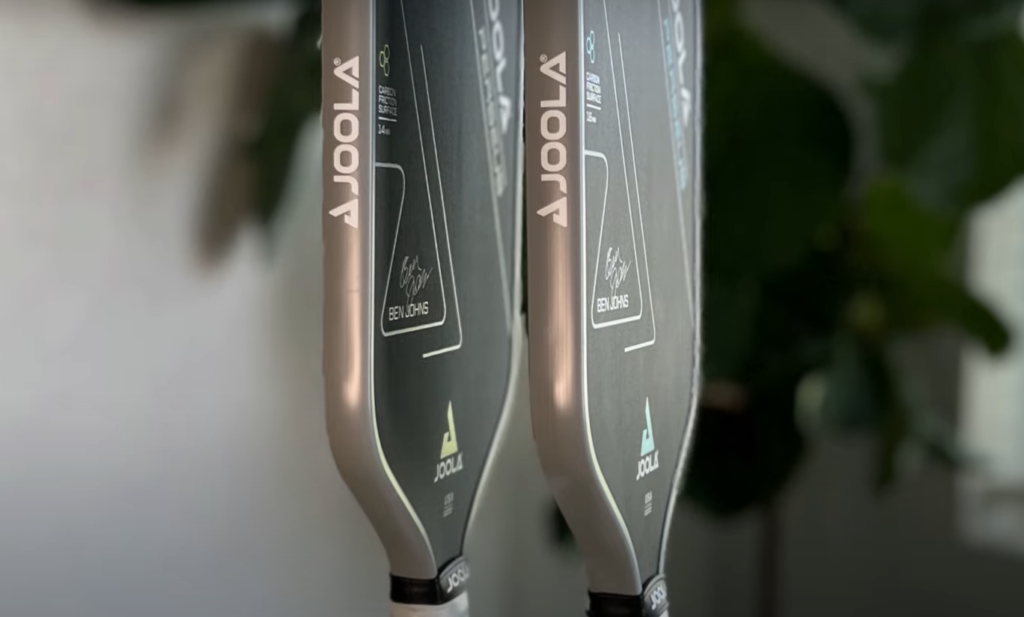
These carefully chosen components lend these paddles their unique combination of lightweight design and exceptional durability, making them highly sought-after among professional and competitive players alike. Not only do these paddles offer superior control and precision during gameplay, but their engineered construction also imparts a remarkable level of power, allowing players to unleash their full potential on the court or table. With their winning combination of strength, finesse, and performance-enhancing features, composite paddles have quickly become the preferred choice for those aiming to elevate their game to new heights [1].
Plastic Paddles
Plastic paddles, commonly crafted from polypropylene or polyethylene, offer a range of advantages. These materials not only make the paddle lightweight and maneuverable but also provide a cost-effective alternative to wood or composite options. This affordability, combined with the versatility of plastic paddles, makes them an excellent choice for beginners seeking an entry point into the sport. With their durability and ease of use, plastic paddles allow novice players to learn and improve their skills with confidence.
How To Choose A Pickleball Paddle- Buyer’s Guide
Pickleball Paddle Grip Size
When it comes to pickleball paddles, one of the most important factors to consider is the grip size. The grip size will determine how comfortable and secure you feel while holding the paddle, which can greatly impact your performance on the court. Here are some tips for choosing the right pickleball paddle grip size:
Measure Your Hand
The first step in choosing a pickleball paddle grip size is to measure your hand. To do this, hold your dominant hand out and use a ruler or measuring tape to measure the distance from the middle crease of your palm to the tip of your ring finger. This measurement in inches will give you an idea of what grip size will be most comfortable for you.
Consider Your Playing Style
Your playing style can also play a role in determining the right grip size for your pickleball paddle. For example, if you tend to use a lot of wrist action in your shots, you may want a smaller grip size to allow for better maneuverability. On the other hand, if you prefer more control and power in your shots, a larger grip size may be more suitable.
Try Different Sizes
It’s always a good idea to try out different grip sizes before making a purchase. Some players may prefer a slightly smaller or larger grip size than what their hand measurement suggests. Don’t be afraid to test out different paddles and see what feels most comfortable and natural for you.
Consider The Paddle Shape
Pickleball paddles come in different shapes, such as widebody or elongated. The shape of the paddle can also impact your grip size preference. A wider paddle may require a smaller grip size to maintain proper control, while an elongated paddle may feel more comfortable with a larger grip size.
Pickleball Paddle Handle Length
In addition to grip size, the handle length of a pickleball paddle is also an important factor to consider. The handle length can greatly affect your reach and control on the court. It means the distance from the base of the handle to the end of the paddle face. To measure the hand length, place the paddle against your forearm and measure from the base of your palm to the end of your fingertip.
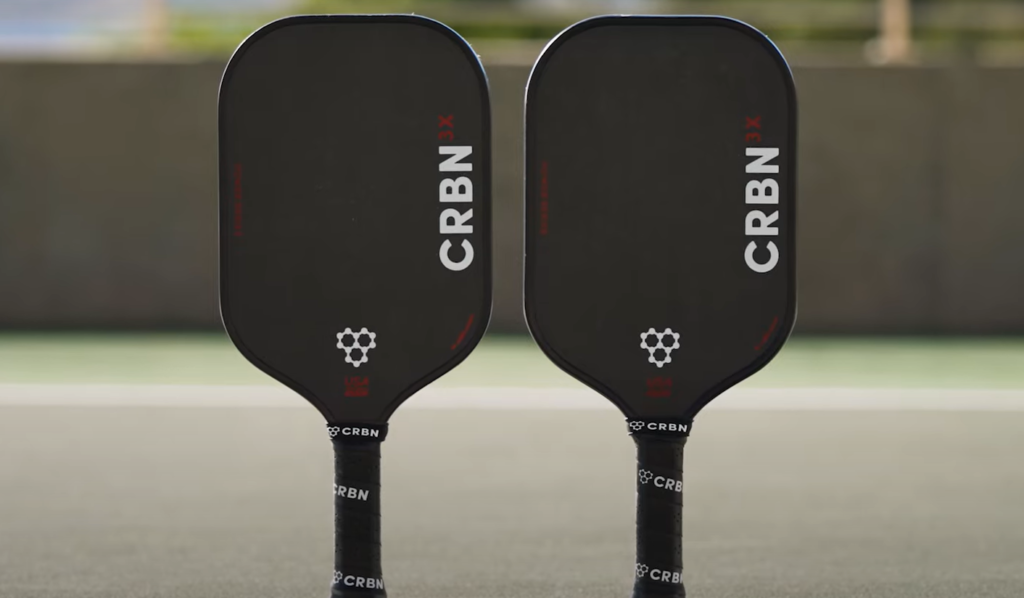
A longer handle can provide more reach on the court, making it easier to hit shots that may be just out of your normal range. This can be helpful for players who have a larger wingspan or prefer a defensive playing style. On the other hand, a shorter handle can offer more control and maneuverability, which may be preferred by players with a smaller wingspan or those who prefer an offensive playing style.
Overall, it’s important to find a pickleball paddle with a handle length that feels comfortable and allows you to play at your best. Some paddles even come with adjustable handle lengths, giving you the flexibility to customize it to your personal preference.
Pickleball Paddle Weight
The weight of a pickleball paddle is another crucial factor to consider when making a purchase. A heavier paddle can offer more power and stability, while a lighter one can provide better control and agility. It ultimately comes down to personal preference and playing style.
For beginners, it’s recommended to start with a lighter paddle and gradually increase the weight as you become more comfortable with your skills and technique. It’s also important to consider the weight distribution of the paddle – some may have more weight in the head for power, while others may have a balanced weight for control.
Experimenting with different weights can help you find the perfect balance for your game. Just make sure to choose a weight that you can comfortably swing and control for an extended period of time without causing fatigue or strain on your arm.
Pickleball Paddle Shape
The shape of a pickleball paddle is also an important aspect to consider. Most paddles are either round or elongated, with some variations in between. A round paddle offers a larger sweet spot and more power, while an elongated paddle can provide better control and precision.
Again, it comes down to personal preference and playing style. It’s recommended to try out different shapes and see which one feels most comfortable for you.
Pickleball Paddle Thickness
While not as crucial as grip size or weight, the thickness of a pickleball paddle can also impact your game. A thicker paddle typically offers more power and stability, while a thinner one may provide better control and maneuverability. The average thickness of a pickleball paddle is around 0.5 inches, but some paddles may vary slightly.
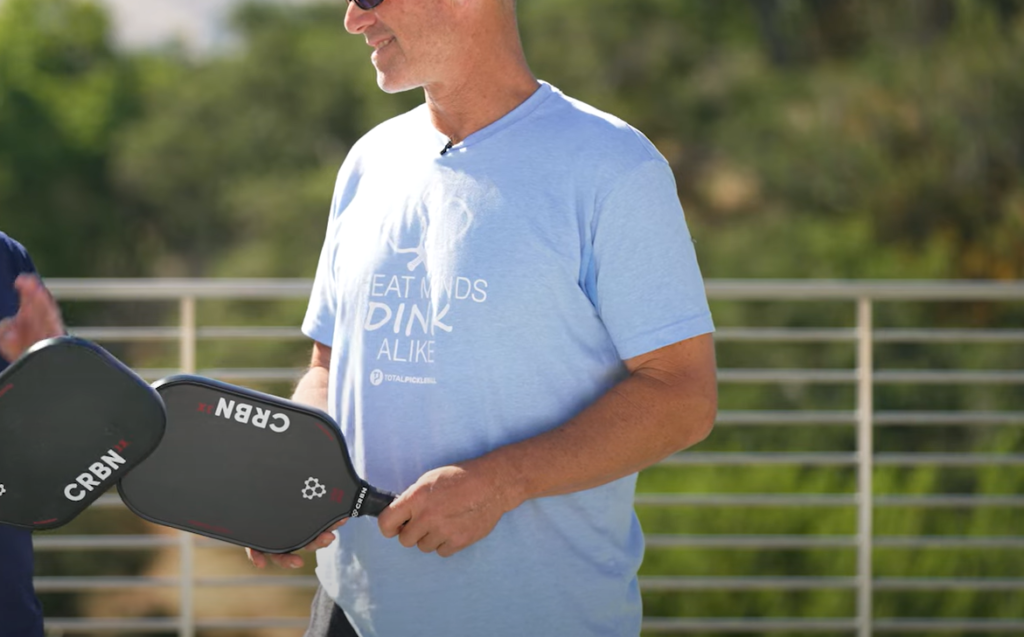
It’s important to note that the thickness can also affect the overall weight and stiffness of the paddle, so it’s important to consider all factors in conjunction with each other when choosing a paddle.
Pickleball Paddle Composition
Lastly, the material and construction of a pickleball paddle can greatly impact its performance. Most paddles are made from either wood, composite materials, or graphite. Wooden paddles tend to be heavier and more durable, while composite and graphite paddles offer more power and control.
It’s important to consider the type of play you will be doing – recreational or competitive – when choosing the composition of your paddle. For more casual play, a wooden paddle may suffice, but for competitive play, a composite or graphite paddle may be necessary.
In conclusion, selecting the right pickleball paddle involves considering multiple factors such as grip size, handle length, weight, shape, thickness and composition. It’s important to try out different options and find one that feels comfortable and suits your playing style. A well-suited pickleball paddle can greatly enhance your game and overall enjoyment of the sport. So, take the time to do some research, test out different paddles, and find the perfect one for you [2]!
How Thick Should Your Pickleball Paddle be?
The thickness of a pickleball paddle is an important factor to consider when choosing your equipment for this popular sport. In general, the thickness of the paddle can greatly affect your gameplay and overall performance on the court.
When looking at pickleball paddles, you will often see them categorized as either “thin” or “thick”.
So, what is the difference between a thin and thick pickleball paddle? And which one should you choose? Let’s dive deeper into this topic and explore the pros and cons of each.
Thin Pickleball Paddles
Thin pickleball paddles are usually made of lightweight materials, such as graphite or composite, and have a thickness of around 7.3mm. These paddles are known for their quickness and maneuverability on the court. They allow players to react quickly to shots and make swift movements.
One advantage of thin paddles is that they offer better control over shots due to their lighter weight and thinner profile. This can be beneficial for players who prefer a finesse game, relying on precise shots and ball placement rather than power.
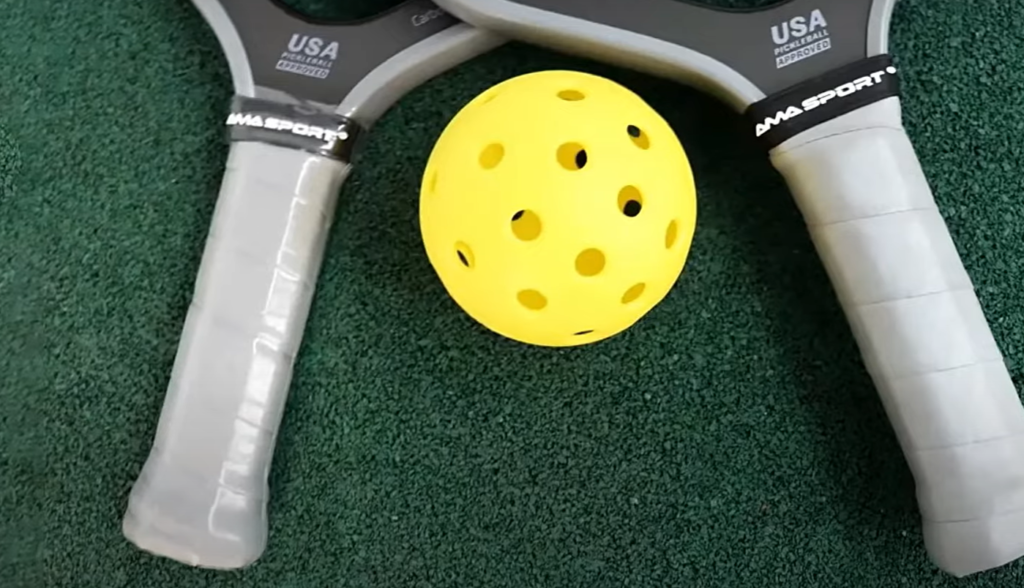
However, the downside of thin paddles is that they may lack power compared to thicker options. With less mass behind your shots, it can be challenging to generate enough force to hit powerful shots or put away volleys at the net.
Thick Pickleball Paddles
On the other hand, thick pickleball paddles usually have a thickness of 7.5mm to 8mm and are made of heavier materials like wood or polymer. These paddles provide more power behind your shots, making it easier to hit harder shots and put away volleys at the net.
Thick paddles can also be more forgiving and offer a larger sweet spot, meaning there is a bigger area on the paddle where you can make contact with the ball and still get a good shot. This can be beneficial for beginners or players who struggle with accuracy.
However, due to their weight and thicker profile, these paddles may not be as quick or maneuverable as thin paddles. They can also be more tiring to use, especially for players with weaker wrists or arms.
Finding the Right Thickness for You
Ultimately, the thickness of your pickleball paddle should depend on your playing style and personal preference. If you prefer a fast-paced game and rely on control and finesse shots, a thin paddle may be the better choice. But if you value power and have a more aggressive playing style, a thick paddle may suit you better.
It’s essential to test out different paddles and determine what feels most comfortable for you. You can also consult with experienced players or coaches to get their recommendation based on your skill level and playing style [3].
How to Choose Between 14 mm vs 16 mm Pickleball Paddle?
When it comes to choosing a pickleball paddle, the size of the grip is something that often gets overlooked. Many players focus on factors such as weight and material, but the grip size can have a huge impact on your game.
Pickleball paddles typically come in two sizes: 14 mm and 16 mm. The difference may seem small, but it can have a big impact on the way you play. In this guide, we’ll dive into the differences between these two sizes and help you determine which one is best for you.
The grip size of your pickleball paddle is important because it directly affects your control over the ball. A smaller grip will allow for more wrist action and spin, while a larger grip will give you more stability and power. It’s important to find a balance between these two factors in order to have the most control over your shots.
If you have larger hands or prefer a more powerful swing, a 16 mm grip may be the better option for you. This size is also great for players who suffer from hand fatigue during longer games. On the other hand, a 14 mm grip is better suited for players with smaller hands or those who prioritize finesse and spin over power.
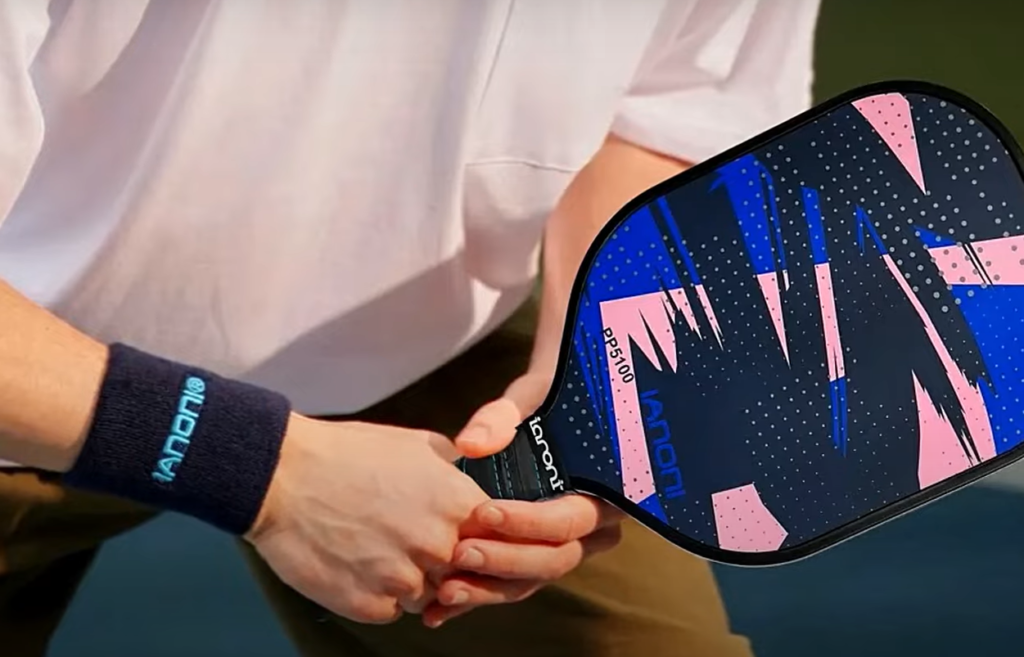
Another factor to consider when choosing between these two sizes is the weight of the paddle. A larger grip may add some extra weight to the overall paddle, which could affect your swing speed. If you’re someone who relies on quick reaction times and fast shots, a 14 mm grip may be the better choice for you.
Additionally, it’s important to keep in mind that the size of the grip can also impact your comfort and overall enjoyment while playing. If you’re constantly struggling to hold onto a paddle with a larger grip, it could affect your performance and make the game less enjoyable. Experimenting with both sizes and finding what feels the most comfortable for you is key.
Ultimately, the best way to determine which grip size is right for you is to test them out yourself. Most pickleball retailers will have demo paddles available for you to try before making a purchase. Take advantage of this opportunity and see which size feels the most natural in your hand.
In conclusion, when choosing between 14 mm vs 16 mm pickleball paddles, it’s important to consider factors such as your hand size, playing style, and overall comfort. Don’t underestimate the impact that a small difference in grip size can have on your performance. Take the time to find the right paddle for you and watch your game improve!
FAQ
Should I get a 14 or 16mm paddle?
It ultimately depends on your personal preference and the type of paddling you will be doing. A 14mm paddle is typically lighter and more maneuverable, making it a good choice for whitewater or surf kayaking. On the other hand, a 16mm paddle offers more power and stability, making it better suited for flatwater or touring kayaking.
What is the difference between 14 and 16 Joola?
The main difference between 14 and 16 Joola is the size of the table tennis balls used in each game. In a game of 14 Joola, players use a standard sized ball with a diameter of 40mm. In a game of 16 Joola, players use an oversized ball with a diameter of 44mm. This larger ball allows for slower and more controlled gameplay, making it a popular choice for recreational players. Additionally, 16 Joola is often played on smaller tables compared to 14 Joola.
How do I choose the right size paddle?
When choosing a paddle, you should consider your height, paddling style, and the type of water you will be paddling in. For flatwater kayaking, a paddle length between your wrist and the top of your shoulder is recommended. For whitewater or surf kayaking, a shorter paddle may be more suitable for quick and powerful strokes. It’s also important to consider the blade shape and material, as well as the shaft construction for comfort and efficiency.
Useful Video: What Pickleball Paddle Thickness to Choose? With CRBN 1 review of 13mm, 14mm , 16mm
Conclusion Paragraph
Overall, 14-mm and 16-mm Pickleball paddles are both great options for beginners and intermediate players. Depending on your preferences, you can choose either one of these sizes that suit your needs. Paddles with a 16-mm thickness tend to have more control and power, making them ideal for aggressive playstyles. On the other hand, paddles with a 14-mm thickness offer faster movement and better maneuverability, which is perfect for players who prioritize speed and agility.
References:
- https://www.paddletek.com/blogs/news/pickleball-paddle-materials
- https://pickleballeffect.com/other/a-pickleball-paddle-buyers-guide-how-to-pick-the-right-paddle-for-you/
- https://pickleballstudio.com/blog/how-does-core-thickness-impact-how-a-paddle-plays





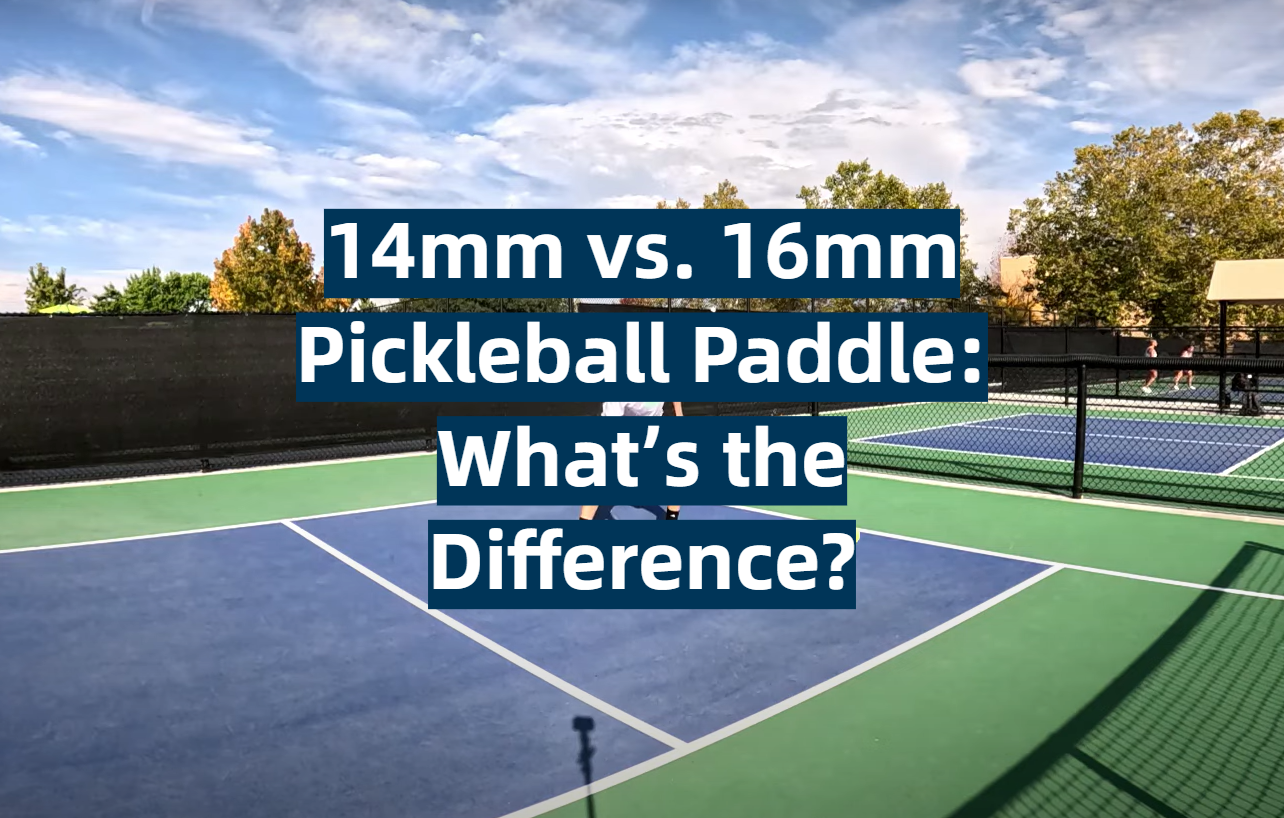

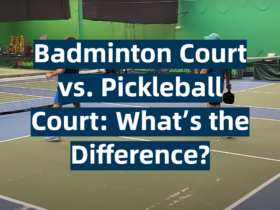
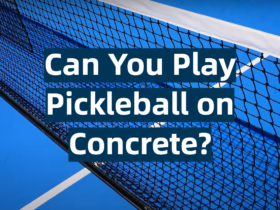
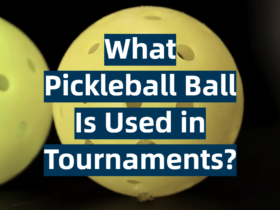
Leave a Review